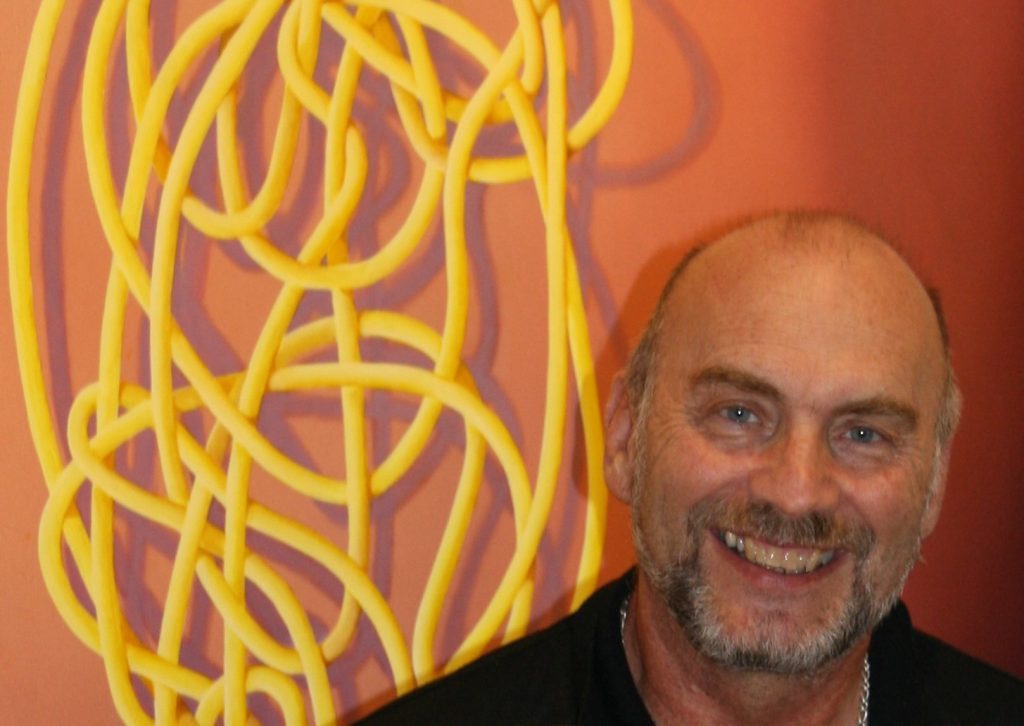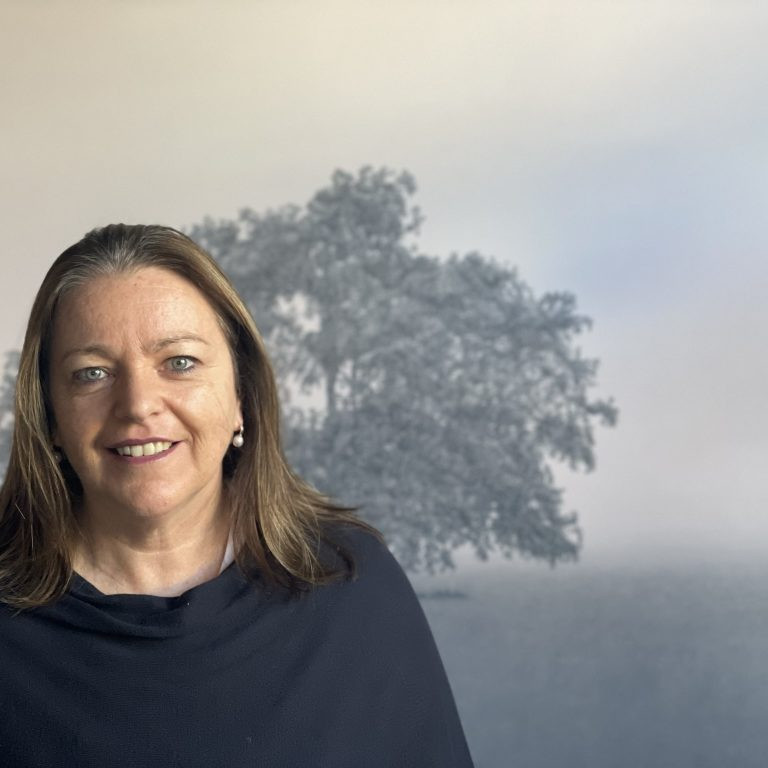James Ainslie Painter
How has the coast directly affected your painting?
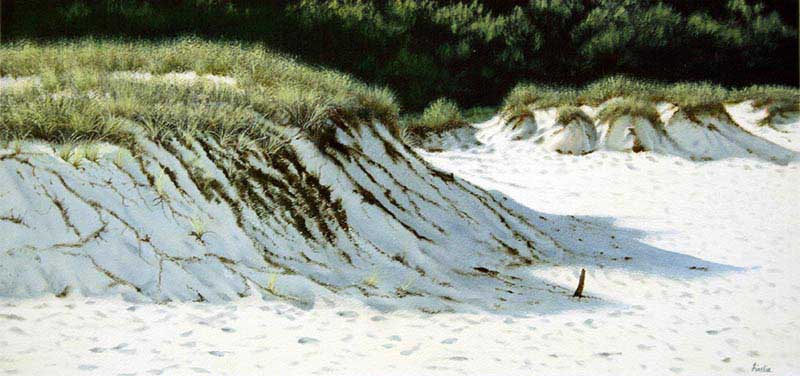
Into the Shadows, Acrylic on linen
I was born near the coast and have spent a lot of my life walking & swimming at various coastlines around Australia so it was inevitable that it had an effect on my inspiration. I get agitated if I don’t get to the coast often unless I am in my other love—the outback.
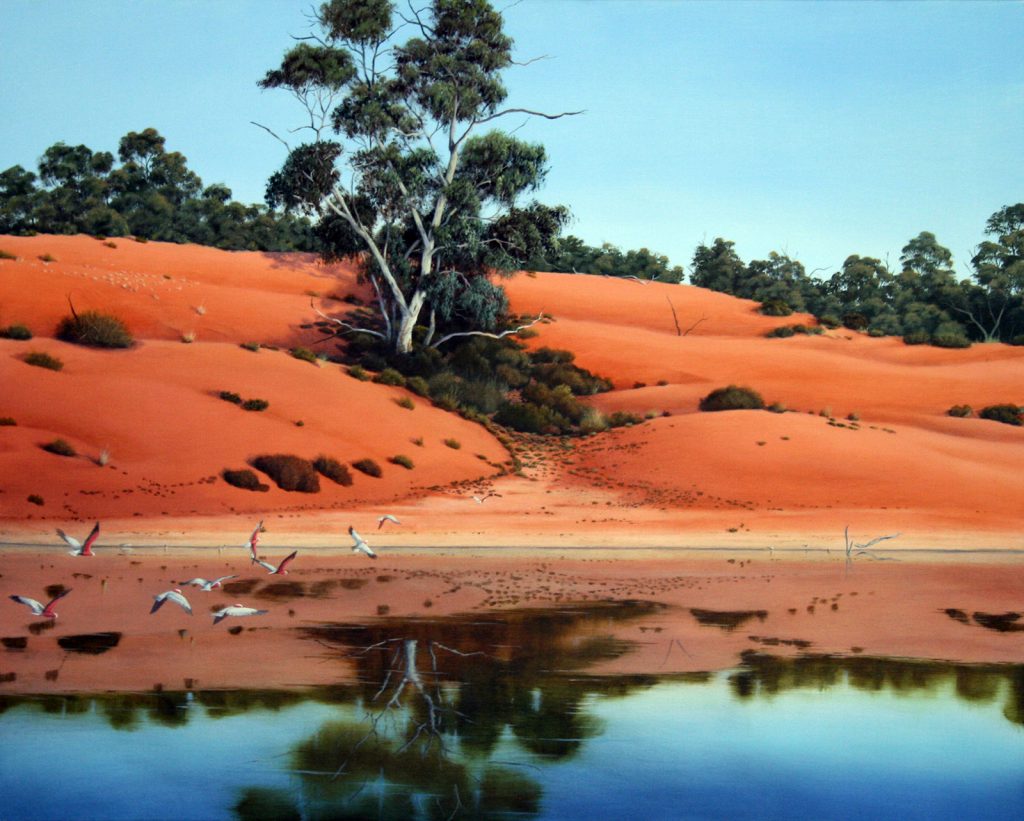
Yulara landscape 1 , Acrylic on Linen,122cm. x 61 cm
How different are parts of the coastlines of Australia?
The coastlines differ vastly around Australia. They differ in light, smell, vegetation, temperature and colour, all of which evoke images for me. The north of Australia has a vastness to it’s coastline with huge tidal fluctuations and often opalescent aqua waters that occur because of the marriage of Pindan & white sands on the shore. The vegetation is totally different to southern beaches too. You have pandanus, grasses & scrubby trees binding the dunes together & often mulla-mulla (a native flowering bush)too. In the south the beaches are often covered with low bushes & beautiful sea grasses & some have seaweed balls washing up on the beach which as kids we loved to throw at each other. Further south the beaches change again as does the light. The Tasmanian beaches are often given a dramatic grey sky to set them off & bring out the greens of the foliage.
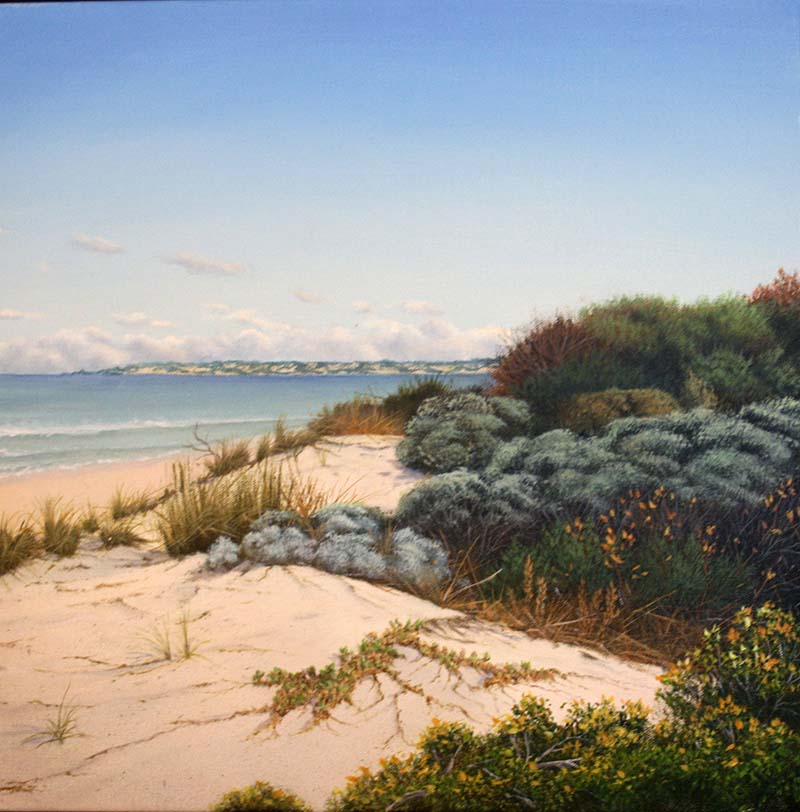
Beach Moods 3, Acrylic on canvas,45cm x 45 cm.
Show us the Australian inland in your work and discuss some of the differences in the use of colour in the work.
The inland of Australia is so diverse in its imagery, from the Flinders Ranges where I lived for a time, to the red desert country around central Australia or the sheer breathtaking beauty of the Kimberley which I visited annually for 16 years. The Flinders throw a soft blue hue ,both in atmosphere & the saltbush/bluebush that sustains the livestock. This is off set with magnificent old red gums ,rocky creek beds and the occasional rugged ,rocky gorge. The red center often brings the comment ”You’ve painted this a bit too strong or red” but you have, to spend time and visit it, to realize the depth of colour out there.
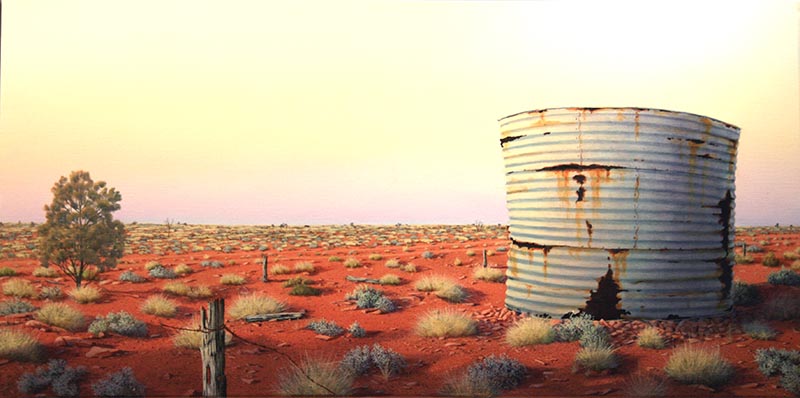
Harsh Country, Acrylic on linen, 122x61cm
In a good year after rains the contrast between the vivid greens & the red sands is amazing , added to that all of the wild flowers break into bloom .The pink and mauve Mulla-Mulla ,yellow Seneca ,vibrant magenta parakelya and the white & yellow poached egg paper daisies can cover the dunes in vast swathes. Then, there is the indescribable Kimberley ,which amazes at every kilometer travelled. The flora is unique, the skies are huge , the colours are brilliant and the size is huge. There is a painting at every escarpment, boab tree, creek bed, gorge & river, not to mention beach. Each of these places has its own evocative smell to trigger images.
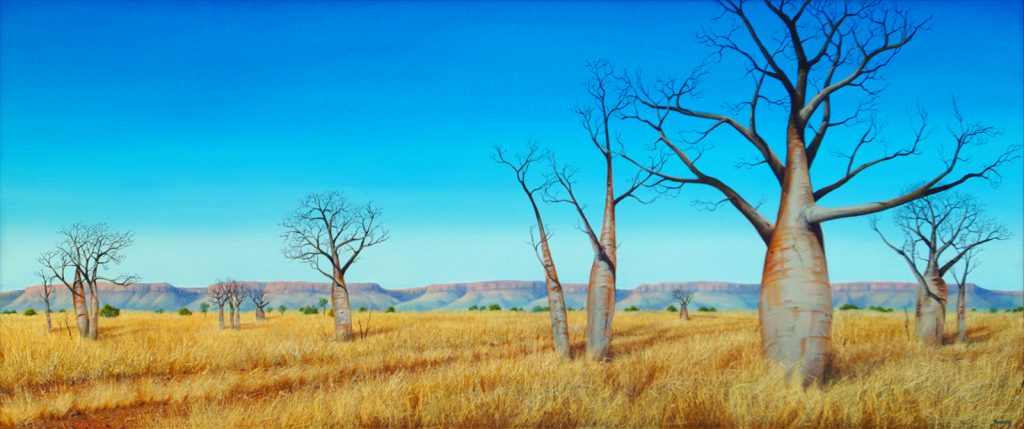
Wyndham Boabs Landscape , Acrylic on Linen,210cm. x 92 cm.
Comment on your residences in Uluru, and how this time has influenced your work.
I enjoyed my years of residency @ Uluru because despite the hype , the rock & Kata Tjuta do live up to their status. There is a lot to see out there other than just the two major attractions and the colours. Scenery and culture all add to the inspiration, there is a feeling that pervades you when you are walking in and around these places—a feeling that you are walking with the ancestors of the place.

A Little Piece of Cooper Creek 2, Acrylic on Linen,155cm x 145 cm
I happens in other areas too, like Island Lagoon.
You have work in many public companies, take one that has helped your career and how?
I’m not sure I can say that any have directly helped me in my career other than allowing me to continue painting by purchasing my work, the fact that they have seen fit to buy it does give you a mental fillip to continue painting.
Can you tell us about being one of six artists to represent South Australia globally?
Early in my career I had a wonderful gallery director (who I stayed with till she retired ) and she was very proactive. She decided she would like to showcase South Australian artists in London and I was lucky enough to be one of the ones chosen. It was an honour to be amongst such illustrious artists, some of whom are still painting/sculpting today. The painters were a diverse selection, some figurative ,some landscape ,some more abstract and a sculptor, whose work has gone on to be included in many prestigious collections.
I think it helped me to feel I had something to give with my art as I was young & full of self-doubt—now I’m old & full of self-doubt.
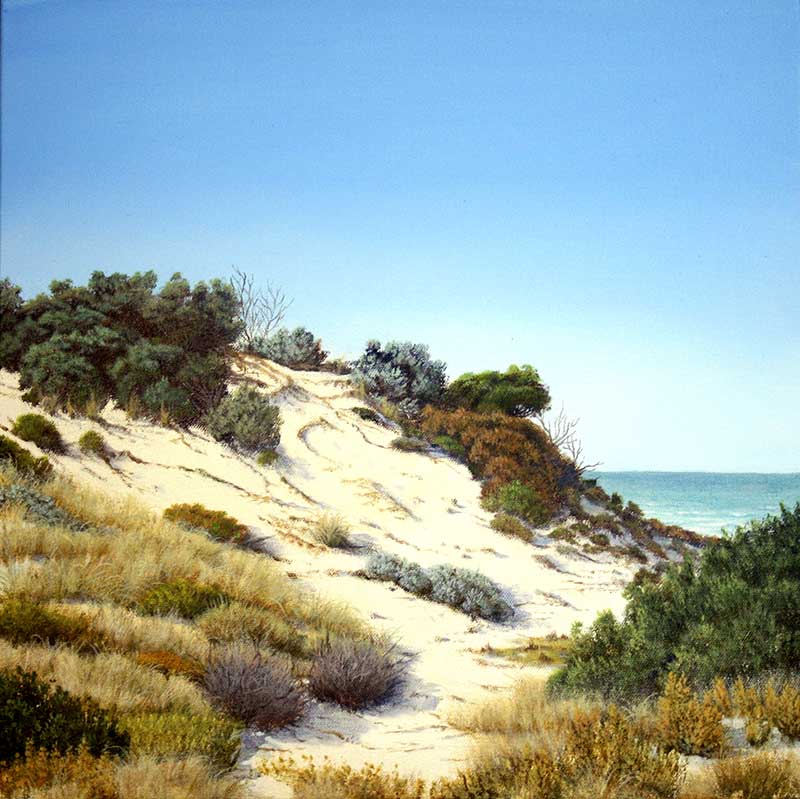
Beach Mood , Acrylic on canvas, 45cm. x45 cm.
You comment., “the essence of place that inspires my Images.” Expand on this.
The essence of a place is a whole collection of senses that wreath a place & evoke images. It can be a smell, a bird call ,a flash of colour or a swathe of colour it can even be just a feeling that the landscape prompts as you walk through it. But that is the most important thing to me, if I don’t experience a place, I don’t paint it.
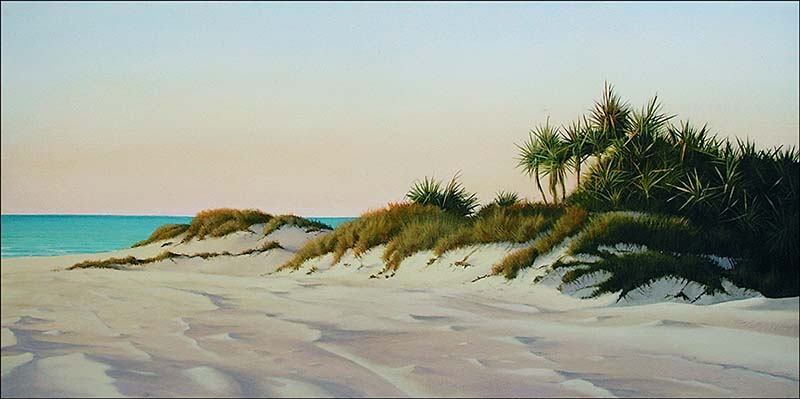
A Little Bit Later, Acrylic on linen ,122 cm. x 61 cm.
Discuss ‘Tread Carefully’ and how this and others similar represent different aspects of nature within the one frame.
Tread Carefully is another step in me describing a place-in this case Kakadu.
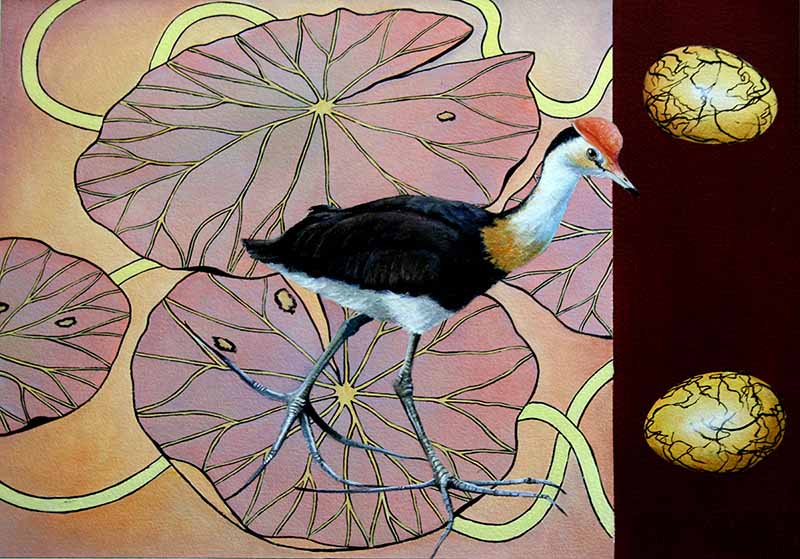
Tread Carefully, Acrylic on Arches, 73x53cm
I often take flora or fauna and develop an image that is both descriptive of the bird/flower & a sight common to an area ,sometimes in a slightly more abstract approach as in Island Lagoon 1.
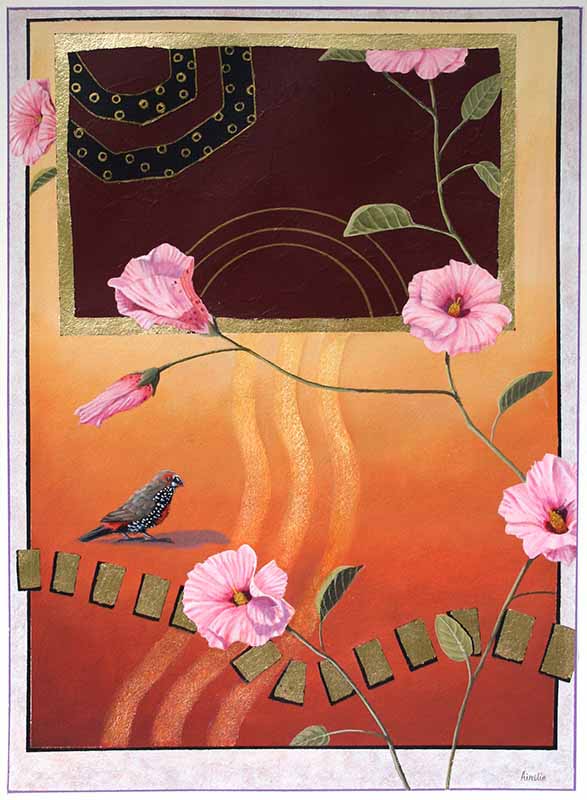
Island Lagoon Revisited 1, Acrylic, gold leaf on Arches paper, 52x72cm
Which uses the harsh iron browns, soft colours of the flora & symbols & marks to show the bleached vertebrae/ animal pathways. Alternatively, Imperious is just the emu with nothing around him because his strong character demanded that he was the center of the work. This is a way to paint “the essence”
Take one or two birds and discuss the work.
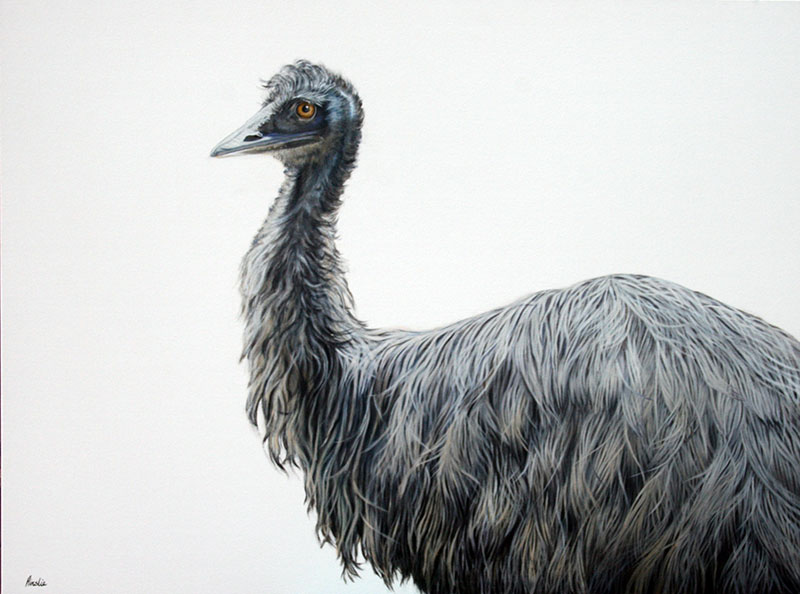
Imperious! ,Acrylic on Canvas,122 cm. x 92 cm.
Imperious is painted sans background and almost life size as I felt his strong almost arrogant presence warranted no distractions. He still sits in my studio looking down on me working with his imperious look.
Whistle stop was as much about the birds in their habitat as it was about the birds (Whistling Ducks) themselves. It was my homage to the bird life in Kakadu which has always captured my interests whenever I have gone there. I have also included stylised/graphic Magpie Geese & Wild ducks that are prevalent on the waterways up there. The almost linocut look is a reference from another life when I did a lot of printmaking
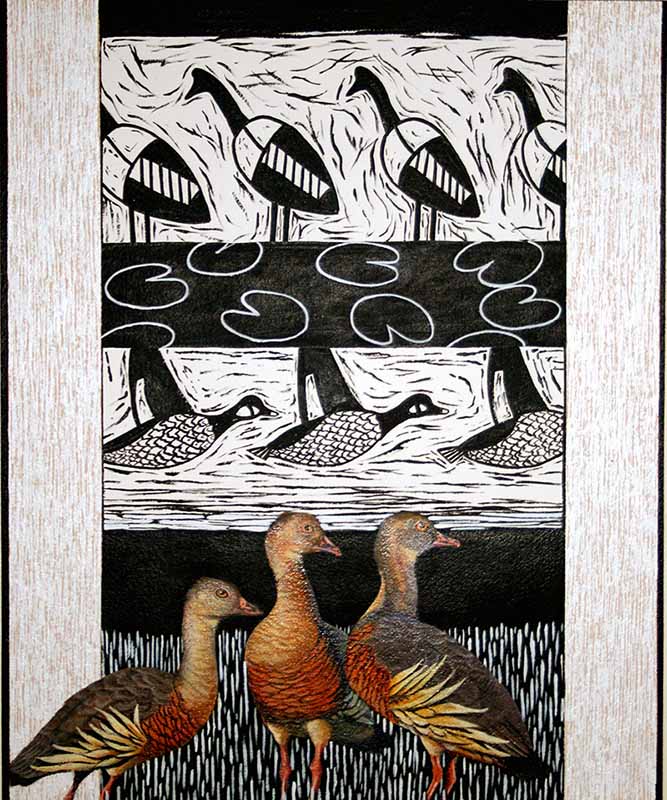
Whistle Stop, Acrylic on arches, 52x72cm
In your coastal work do you ever add people?
Why have you made this decision?
Because I’m a curmudgeonly old bloke & because I tend to walk the beaches less populated & at dusk or dawn when there isn’t another soul to spoil the beauty. I prefer to put a bird in my coastal work-they are far less intrusive to the feeling of peace I try to achieve.
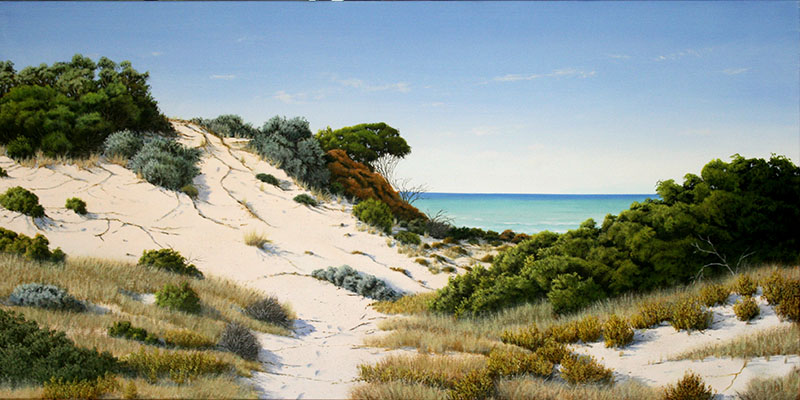
Cloud Wisps 1, Acrylic on linen, 122x61cm
Discuss painting water and, also the reflections found in water.
Water has always been a battle to paint but at the same time it has been intrinsic to a lot of my work. The best I can say is that I go to the studio & fight with the paint until I achieve something I am half satisfied with.
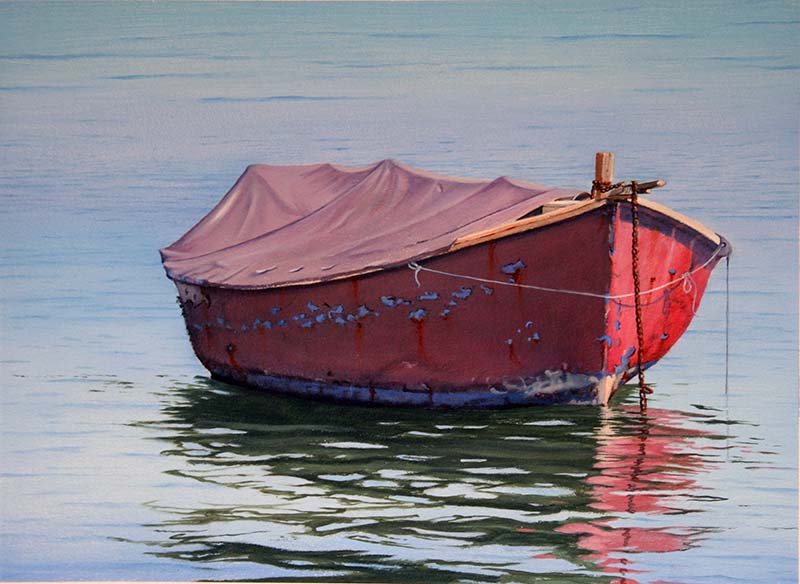
Neglected, Acrylic on Arches, 72x52cm
Beautiful reflections continue to attract me.
Discuss how you paint place and time in your work.
Time is usually by the light I choose to paint—dusk, dawn or strong midday light with strong shadows.
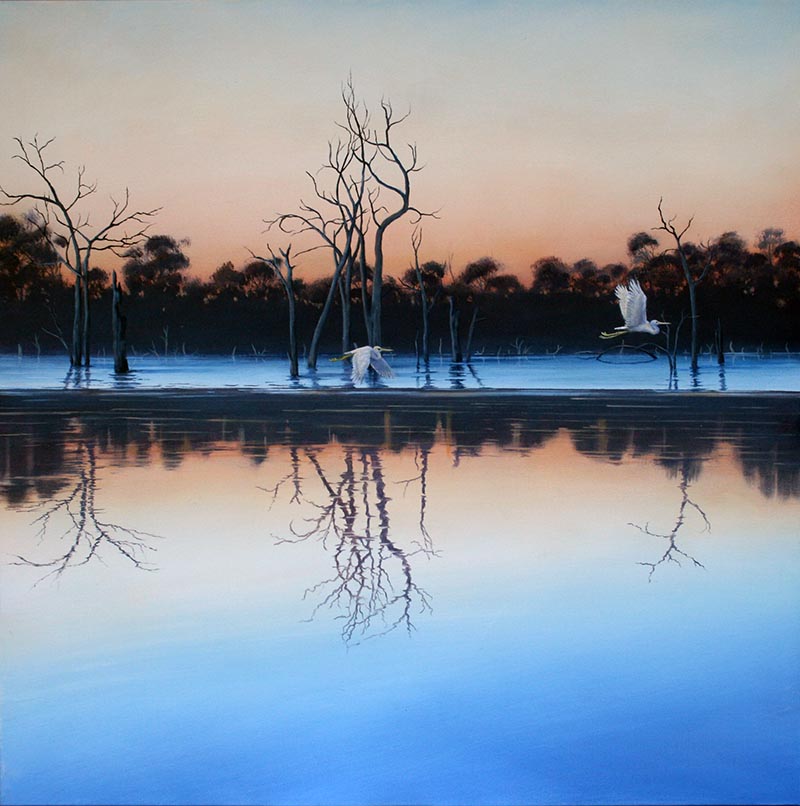
Last Light – River, Acrylic on canvas, 101x101cm
The other way I paint time is the area/painting itself , because it is a record of one of my trips. Place is evident in all of my work because, again it is usually an image specific to a particular place even if it is not a straight landscape. As in Fragments of An Inland sea ,which is inspired by my visits to various fossil field around Australia.
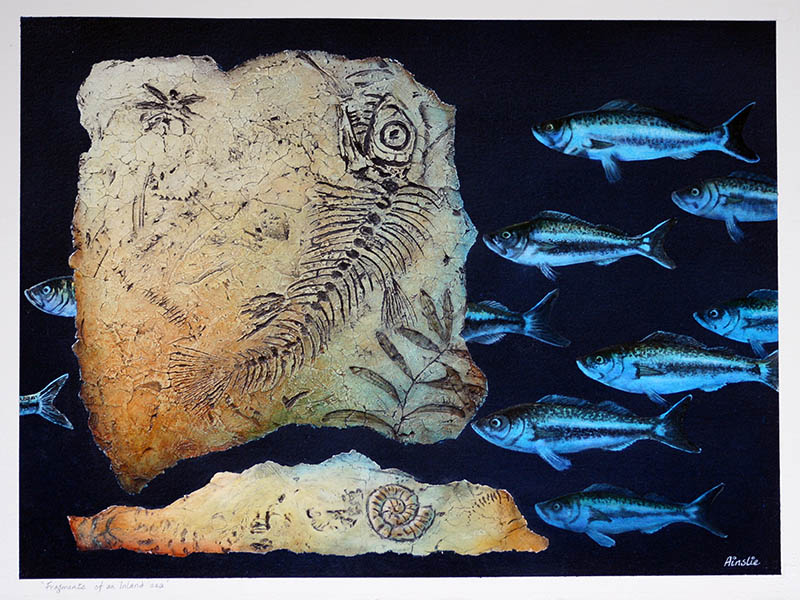
Fragments of An Inland Sea, Image size,74 cm .x 54 cm, Acrylic on Arches
Do you use a sketch book? How do you record places you wish to paint?
I use many methods to record a place. I used to do small onsite gouaches, but not so often now. I do jot down very rudimentary line sketches & notes to jolt my memory & I do take photo’s which I cast about the studio to remind me of the essence & sometimes for reference if it is a particular flower or bird but my work is a montage of an area not a specific place, though I hope it is recognisable. In the studio I have books & books of small, coloured studies I do to work out a painting.
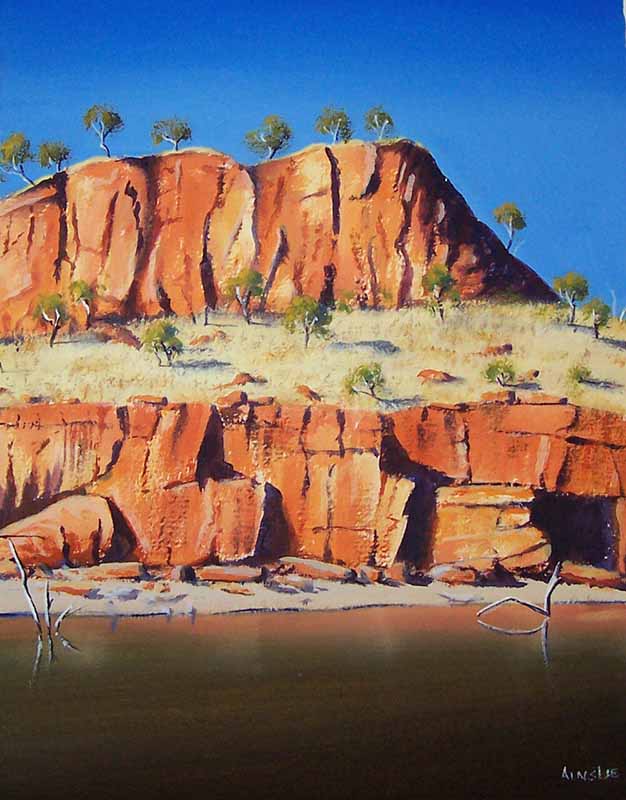
Gorge Note Book 4, Acrylic on Arches, 26x35cm
Some never come to fruition & sometimes the big painting gets destroyed because it isn’t a patch on the sketches, but occasionally we have a winner.
What is one tool of trade that you value highly and when did you first come to use it and understand its value?
It is hard to pinpoint one tool of trade so I will say worn brushes & useless credit cards ,both of which are great for mark making. “Summer Hillside “painted with credit card, grass & glad wrap
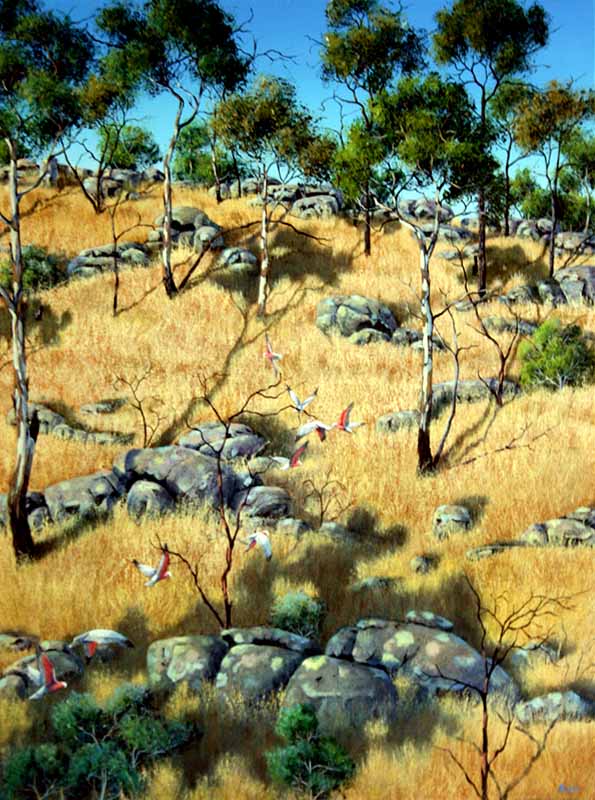
Hillside Shadows 2, Acrylic on canvas, 92x122cm
Contact:
James Ainslie
ainsliestudio@aapt.net.au
Deborah Blakeley, Melbourne, Australia
Interview by Deborah Blakeley, February 2021
Think a colleague or friend could benefit from this interview?
Knowledge is one of the biggest assets in any business. So why not forward this on to your friends and colleagues so they too can start taking advantage of the insightful information the artist has given?
Other artists you may be interested in:


